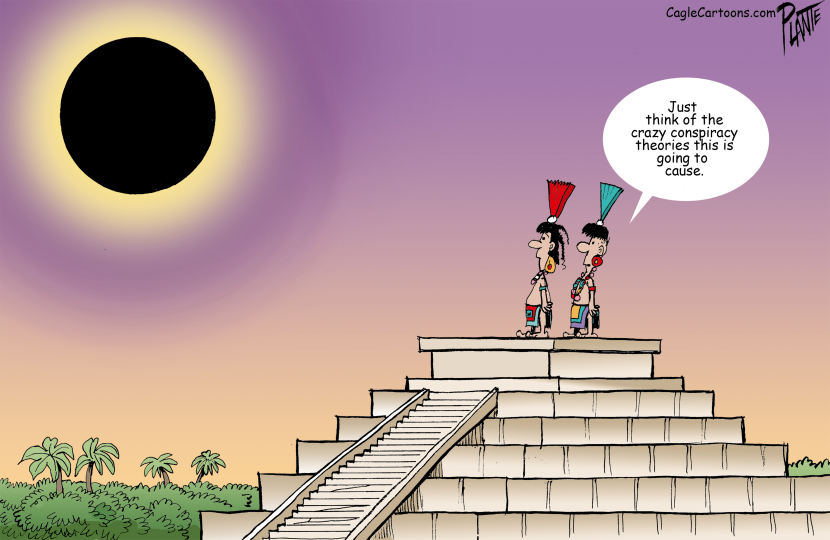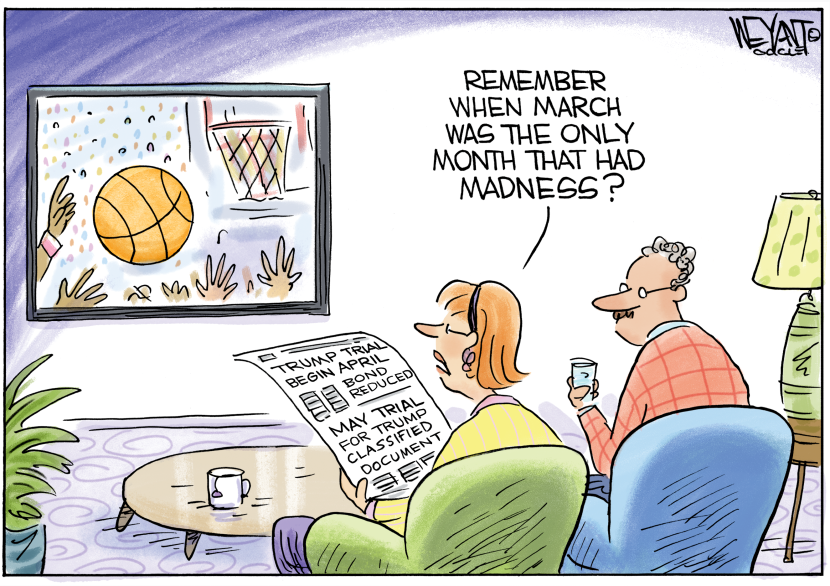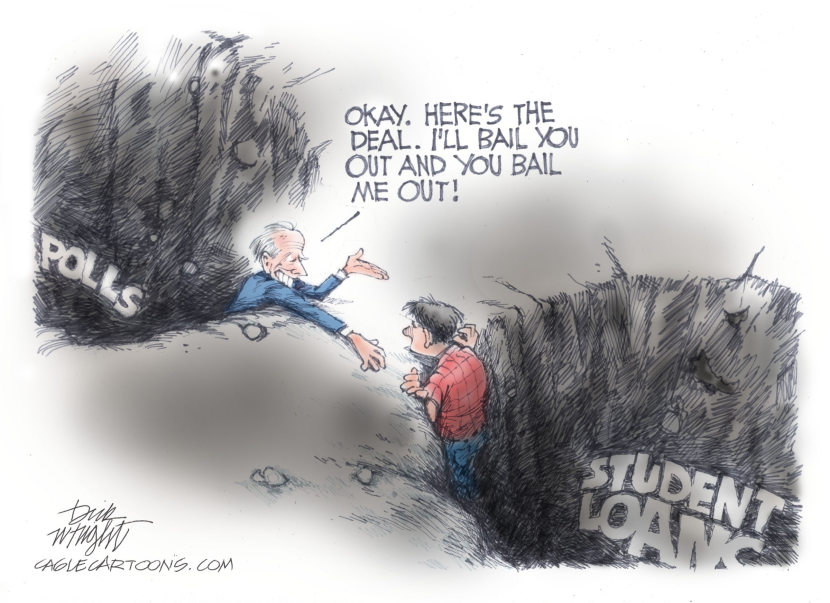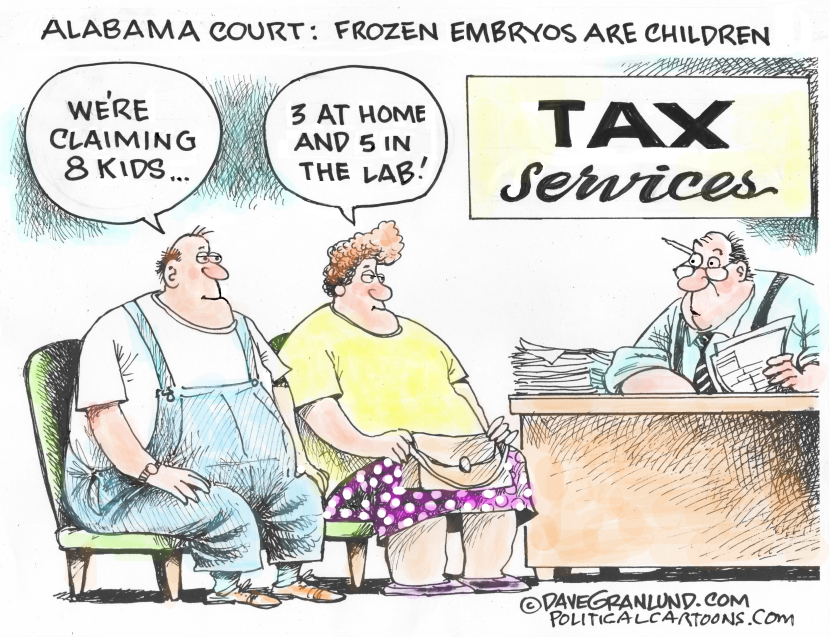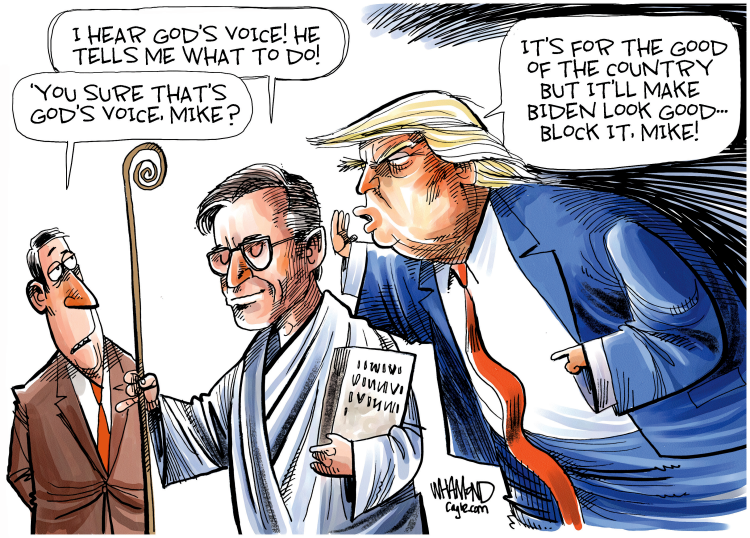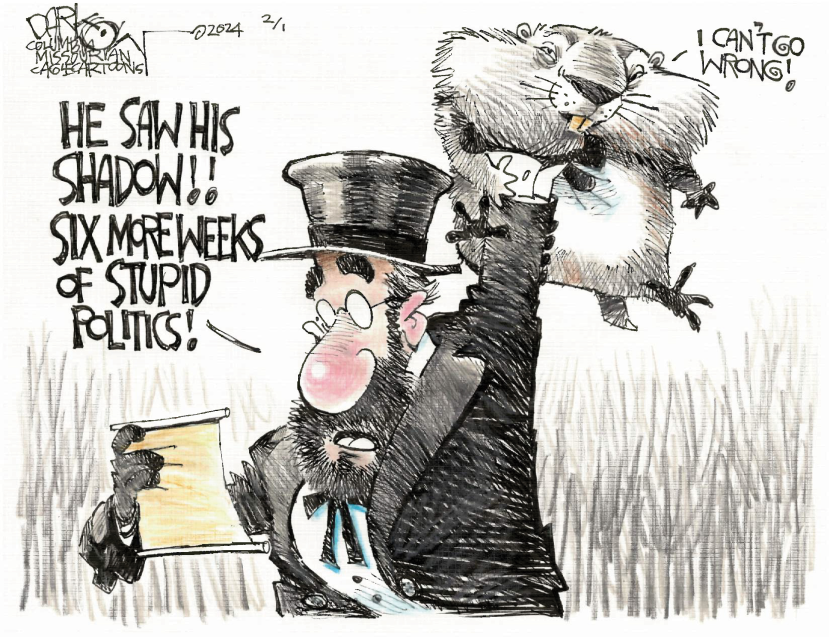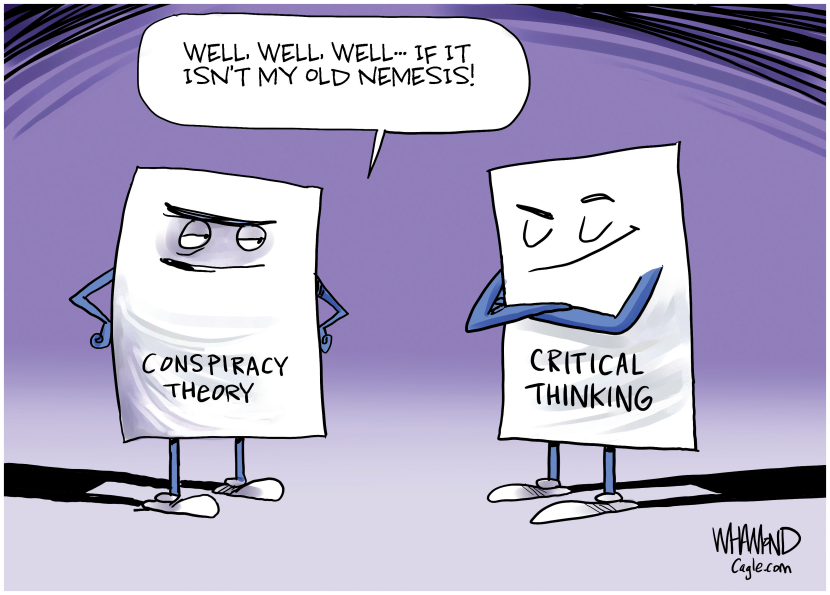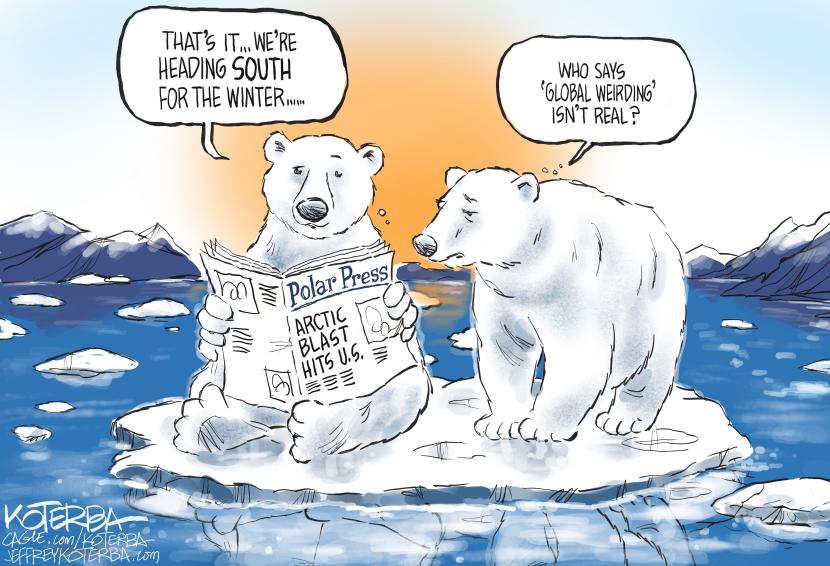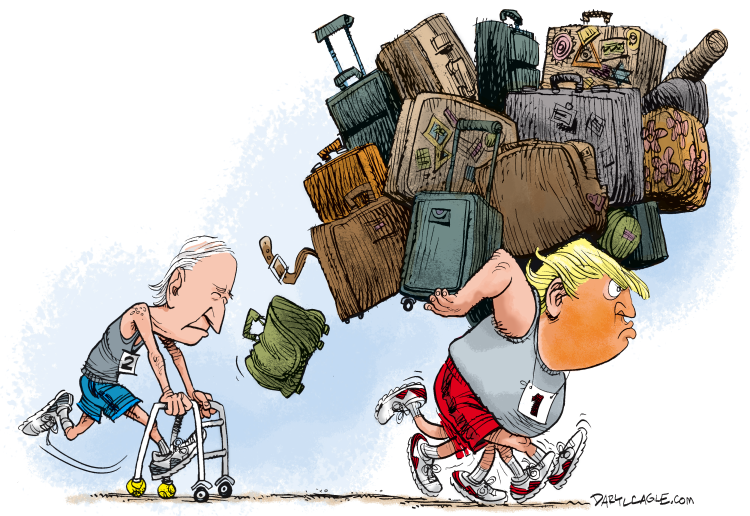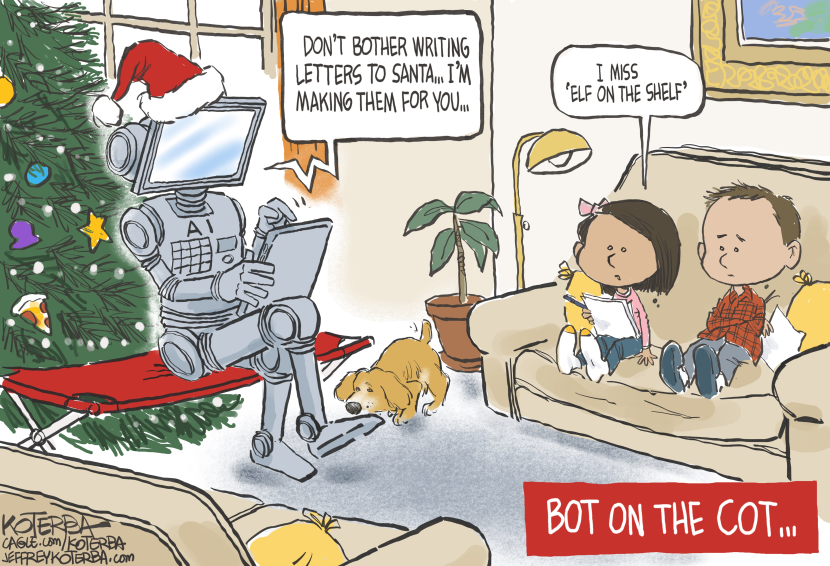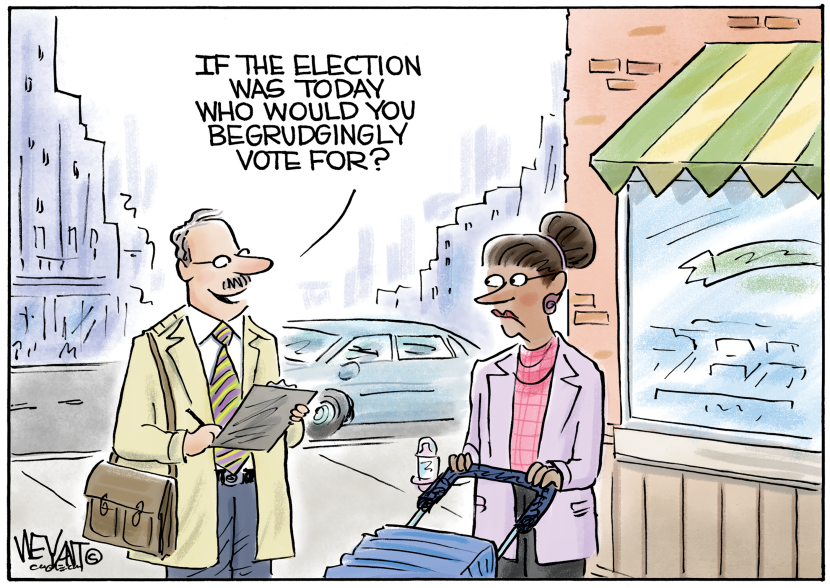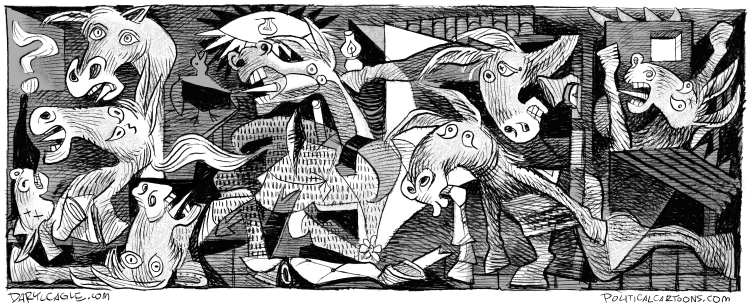Here’s another story about being a freelance illustrator in New York in the 1970’s, from my brilliant cartoonist buddy, Randy Enos.
–Daryl
Some years ago I went into New York City with my young friend, an aspiring illustrator named Debbie; I was going to take her on my rounds with me and introduce her to art directors at NBC, New York Times, National Lampoon and more. I had been working on some big project and I was lugging my biggest black portfolio. I had to show some work to a client and then I was going to go home that evening and work some more on the project and return the next day.
This morning was going along nicely and before we were to have lunch, I thought we’d quickly go to a show of Jean-Michel Folon’s work at the LeFebre Gallery at 47 E. 77th Street. We hopped into a cab and arrived across the street from the gallery/townhouse. As I crossed the street with Debbie, I patted my pockets, as I was accustomed to do, to make sure I had everything … and … I discovered my wallet was missing! I realized it must have fallen out in the cab. I whirled around and the cab was gone! Panic!
We went in to see the show, anyway, which, ironically, consisted of collages in which there were actual coins. Each piece of art re-enforced my sense of present poverty.
Back out on the street, we assessed our financial situation. Between the two of us, we just had enough coins to get us back down near Grand Central Station by bus. So, we got on a 5th Avenue bus and headed downtown. As we approached 52nd Street, Debbie said she wanted to visit her new acquaintance, the illustrator, Bob Blechman so I told her to get off there and I would continue down to one of the next stops, visit my art directors at NBC, and we would meet later on the train to go home.
At 49thstreet, I hopped off and walked a few steps up the street before I realized that I wasn’t carrying my big portfolio with all the components of the job I was working on. I had shoved it into the space behind the driver’s seat while we had stood in the aisle of the bus. I looked south on 5th Avenue to find my bus and instead I saw about three identical blue busses. Fortunately, I had looked at the driver when I was on the bus and he was a large black man. So, I ran quickly to overtake the nearest bus to me. As I caught up with it, at the next stop, I saw that it wasn’t my driver.
I started running to catch up with the next bus in front of that one. Again, not my driver. It was hot and I was out of breath at this point and panic was setting in as I imagined my fate of losing my portfolio and its contents to the vast black hole of the New York Transit Authority. Who do I call? What do I do? I started running again. I could see that there were two or three busses approaching the library stop at 42nd Street. Big stop. I was sure to find my bus there. My hopes were up. I ran like I have never run and probably will never run again. I swear, as I crossed 41st Street, I think I was running over the hoods of cars. I felt this was my last chance. As I got there, a bus or two had pulled away but there were still one or two left. I checked them out……. not my driver! I looked down the avenue. I couldn’t run any more. My chest was heaving, I was sweating.
Just then, a police car came creeping up. AHA! I dragged myself over to the curb and flagged them down. The window went down. I … I … tried… to … tell … them my problem. I was incoherent. The two cops looked at me puzzled. I kept trying to get the words out but I couldn’t catch my breath. They gestured for me to get in the car. I collapsed into their back seat telling them, as best I could about the lost money, the portfolio and the big black bus driver. The cop next to the driver said, “What was the number of the bus?” The number of the bus? The number of the freaking bus? How the hell did I know what the number of the bus was! He then instructed the driver to overtake the bus we saw ahead of us and see if a “n****r “ was driving. We caught up with it and driving by the left side we could see that it wasn’t my driver. I pleaded with them to catch up with a few other busses we could see. They did… to no avail. Finally at 23rd Street, where 5th Avenue forks, they tired of me and decided that I should consult the bus dispatcher we could see on the curb at our left. “He’ll help you out” they said. I went over to the man holding a clipboard and started telling him my tale of woe. As I was speaking, I looked across the fork in the avenue and saw a bus pulling away… WITH A BIG BLACK GUY DRIVING!!! The dispatcher blew a whistle and flagged him to stop. I ran across and the driver opened the door and there was my big black portfolio just where I had left it!
I slowly dragged myself along the street completely worn out with my precious portfolio in tow while a crazy bag lady screamed something at me. I paid no attention for I was now concerned with how I was going to explain why I didn’t have a ticket to the train conductor, because it was in my lost wallet where I always put them. BUT … maybe not. Sometimes I put them in my shirt pocket. I patted my pocket. My ticket was there. A little wave of joy … just a teensy one, wafted over me.
As I slunk into my train seat next to the ebullient Debbie, she was chortling about her visit with Blechman. She asked if I had a good time at NBC. I grumbled something incoherent and glared her into silence.
At home that night, I received a phone call from the man who had gotten into the cab right after me and found my wallet and my phone number therein. I told him that I was coming in the next day and he gave me his business address.
The next day, in a downpour, I trudged across the street from Grand Central to a small liquor store to buy my benefactor a nice bottle of wine. Then, with bottle in hand along with my portfolio and umbrella, I made my way up the street to the address he had given me. It was a labor union office. I climbed up a narrow stairway on which were seated a few of their members to a little office at the top with a little pay window. I asked for the man who had called me and I was directed down a hall to an office from which I could hear serious negotiations transpiring. I dragged my dripping self to the open door and was spotted by a robust fellow standing behind a desk in the midst of an argument.
He spotted me, “I know who you are” he smiled, “I saw your driver’s license picture in your wallet.”
He drew my wallet from his drawer and handed it to me. I, in turn, handed him a soggy bag which contained my gift of wine.
“No… NO” he said, “I can’t take that!”
“Please take this” I said
“No, I couldn’t take that!”
“Yes, you have to take it!”
“Oh no no no, I can’t accept that!”
Finally, I screamed, “LOOK… IT’S POURING OUTSIDE… I’M SOAKING WET AND I’M LUGGING THIS BIG HEAVY PORTFOLIO AND THIS DAMN UMBRELLA AND I’M NOT CARRYING THIS BOTTLE OF WINE ANOTHER STEP!”
“Oh… okay” he said, “Thanks!”
Read more more of Randy’s cartooning memories:
8th Grade and Harold von Schmidt
The Funniest Man I’ve Ever Known
Read “I’m Your Bunny, Wanda –Part One”
Read “I’m Your Bunny, Wanda –Part Two”
Famous Artists Visit the Famous Artists School
